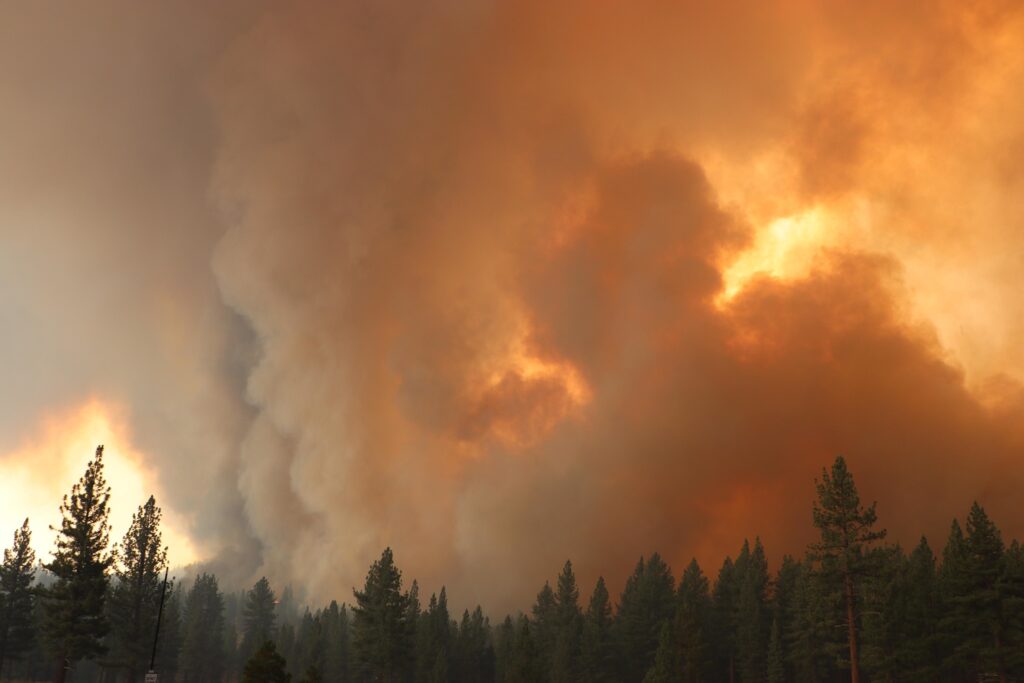
This article was originally published in the Missoulian.
As spring unfolds in Montana, the transition from snowmelt to vibrant bloom will inevitably be marred by an unwelcome guest: wildfire smoke. The onset of smoke-filled skies arrives earlier each year, casting a shadow over our pristine landscapes.
Wildfires are not just natural disasters but also significant contributors to air pollution. Over the past two decades, poor air quality days have increased, largely due to the escalating frequency of catastrophic wildfires.
To safeguard our air quality, it’s vital we address the wildfire crisis. Forest restoration tools that help manage forest density, decrease fuel loads, and restore natural fire regimes are crucial in mitigating out-of-control wildfires. Controlled burning is a proven method for restoring forest health, helping forest resiliency by reducing combustible forest materials before catastrophic fires. Concerning air quality, smoke from prescribed fires is preferable to wildfire smoke because its quality and timing can be controlled. Prescribed burns are conducted under planned, predictable conditions, allowing for additional measures to minimize exposure to nearby populations.
However, bureaucratic hurdles, a lack of resources, and stringent pollution standards obstruct beneficial efforts. As described in the Property and Environment Research Center’s report Burn Back Better, if we are to mitigate the threat posed by wildfire smoke, we must dismantle barriers and ramp up prescribed burning.
In Montana, liability poses a significant barrier to private landowners adopting prescribed fire. Many landowners are unsure about their legal risks if a prescribed fire escapes. Despite the low risk of escape, fear of legal repercussions discourages the use of prescribed fire. The state should clarify liability standards, encouraging landowners to consider this tool, thereby fostering healthier landscapes and mitigating wildfire risk.
Moreover, using prescribed fire has been hindered by limited resources and insufficient training opportunities. Many private landowners in the state lack familiarity with prescribed fire methods and a clear path to accessing resources, training, or practical experience. Prescribed burn associations provide coordination. These voluntary, grassroots organizations facilitate training opportunities, provide resources like ignition devices or safety apparel, coordinate burns across property lines, and organize crews to implement burns. Though currently absent in Montana, prescribed burn associations help implement controlled burns on private properties, thus improving air quality.
Montana is forming a prescribed fire council to address regulatory and logistical barriers. An encouraging step forward, a prescribed fire council brings together private landowners, federal and state agencies, nongovernmental organizations, and tribal and private interests to share information and spur policy changes.
On top of state-level challenges, federal regulations complicate the use of prescribed fire. The Environmental Protection Agency (EPA) recently finalized a rule to impose stricter air quality standards. Curiously, smoky days resulting from wildfires are considered “exceptional events” and don’t count against new pollution standards. However, the process for exempting prescribed smoke emissions from pollution standards is more difficult. While reducing air pollutant levels could benefit public health, simply tightening the emission standard may not translate into actual reductions. Smoke from catastrophic wildfires is the most significant source of particulate matter air pollution and is likely to grow. This rule will, however, penalize one of our most effective tools for reducing wildfire smoke—prescribed fire.
Legislation from both sides of the aisle has sought to accelerate the pace and scale of forest restoration work, including prescribed burns. Recently, 25 Western Democratic lawmakers wrote a letter urging the EPA to consider the new rule’s impact on prescribed fire. Lawmakers must continue to address bureaucratic hurdles, ensuring prescribed burns remain a viable tool for effectively managing air quality.
By removing bureaucratic obstacles and providing necessary support for prescribed burns, we can promote healthier forests and cleaner air for all.



